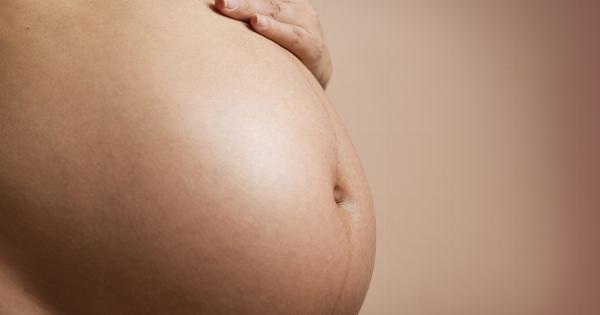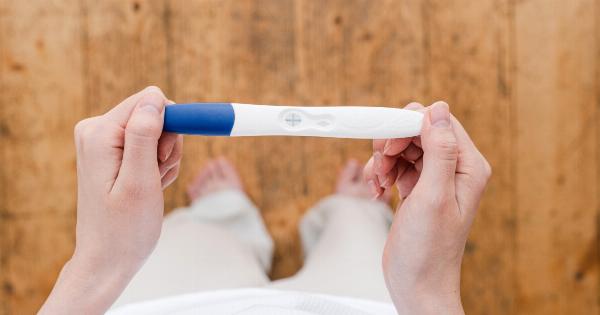A high-risk pregnancy is a term used to describe a pregnancy in which the mother or the baby has an increased chance of experiencing complications during or after birth.
One of the factors that can contribute to a pregnancy being classified as high-risk is having a baby with a higher than average birth weight, also known as a heavy baby. In this article, we will explore the consequences of a high-risk pregnancy due to heavy babies, including the potential risks for both the mother and the baby.
Understanding Heavy Babies
Heavy babies, also known as macrosomic babies, are those who weigh more than 8 pounds 13 ounces (or 4,000 grams) at birth. While every baby is different, certain factors can increase the likelihood of having a heavy baby.
These include genetics, maternal obesity, maternal diabetes, and a history of heavy babies in previous pregnancies. It is important to note that not all heavy babies pose risks, but they do increase the chances of complications during pregnancy and delivery.
Risks for the Mother
When a mother carries a heavy baby, she may experience various risks and complications. These include:.
Gestational Diabetes
Mothers carrying heavy babies are at a higher risk of developing gestational diabetes, a condition characterized by elevated blood sugar levels during pregnancy.
Gestational diabetes can have serious implications for both the mother and the baby, including an increased risk of developing type 2 diabetes later in life.
Preeclampsia
Preeclampsia is a condition that affects pregnant women, characterized by high blood pressure and damage to organs such as the liver and kidneys.
Women carrying heavy babies have a higher risk of developing preeclampsia, which can lead to severe complications for both the mother and the baby.
Cesarean Section
The risk of requiring a cesarean section is significantly higher for mothers carrying heavy babies.
This is primarily due to the increased likelihood of difficulties during vaginal delivery, such as shoulder dystocia, where the baby’s shoulder becomes stuck behind the mother’s pubic bone. Cesarean sections carry their own set of risks and complications, including longer recovery times and potential infections.
Risks for the Baby
Heavy babies themselves are also at an increased risk of certain complications. These can include:.
Birth Injuries
Due to their size, heavy babies are more likely to experience birth injuries during delivery. This can include fractures, especially of the clavicle or collarbone, as well as nerve damage.
These injuries are usually temporary but can require medical intervention and monitoring.
Hypoglycemia
Heavy babies are more prone to developing low blood sugar levels, or hypoglycemia, shortly after birth. This is because their bodies have become accustomed to high levels of sugar supplied through the placenta during pregnancy.
Prompt identification and treatment of hypoglycemia is essential to prevent complications and ensure the baby’s well-being.
Obesity and Type 2 Diabetes
Research suggests that heavy babies have a higher risk of becoming obese and developing type 2 diabetes later in life.
This is believed to be due to the metabolic changes that occur in response to the excess supply of nutrients during the prenatal period. It highlights the importance of monitoring and promoting healthy lifestyles for these babies as they grow.
Prevention and Management
While it may not always be possible to prevent having a heavy baby, certain measures can help reduce the associated risks. These include:.
Regular Prenatal Care
Attending regular prenatal check-ups allows healthcare providers to monitor the baby’s growth and the mother’s overall health. Early detection of potential complications can help in managing them effectively.
Healthy Lifestyle Choices
Eating a balanced diet and engaging in regular physical activity during pregnancy can help manage weight gain and reduce the chances of having a heavy baby. This is particularly important for women with underlying conditions like diabetes or obesity.
Monitoring Blood Sugar Levels
For women at risk of gestational diabetes, regular monitoring of blood sugar levels can help in early detection and management of the condition. This can contribute to better outcomes for both the mother and the baby.
Conclusion
A high-risk pregnancy due to heavy babies can have significant consequences for both the mother and the baby. It is essential to be aware of the potential risks and complications and to work closely with healthcare professionals to mitigate these risks.
By ensuring regular prenatal care, adopting a healthy lifestyle, and closely monitoring any underlying conditions, the chances of a healthy pregnancy and safe delivery can be improved.

























